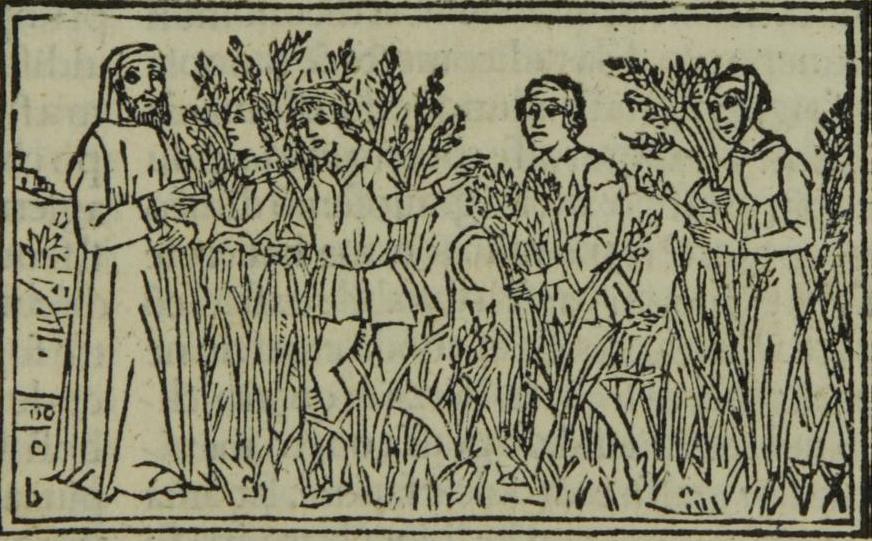TOMMASO VIDAL
After more than a decade of overall peace, in the summer of 1410 war had broken lose once again within the struggling patriarchate of Aquileia. A coalition of towns and nobles moved against the patriarch Antonio Pancera and his only supporting town, Udine. Under the pressure of international events (the Great Schism, the Italian policies of Sigmund of Hungary, Venice’s need for control over the Alpine passes) the local conflict in Friuli soon turned to an all-out international war. The conflict, as one would imagine, took place mainly in the countryside, where the Hungar troops led by the Florentine commander Pippo Spano clashed with the Venetian army led by Carlo and Pandolfo Malatesta. When the contenders reached a truce in 1413, war had taken a heavy toll on productive structures in the countryside, especially in the southern area of modern-day Friuli. Here raids from both parties had left peasants without stocks and work animals, while also stimulating peasant mobility.
During the truce, the hospital of St. Mary in Udine, one of the wealthiest landowners in the area, sought to overcome the damages war had done to its farms. One of the main areas of concern for the hospital management was the growing risk of estate abandonment, especially after war and epidemics had severely reduced the available workforce. In 1417, for example, a woman named Leonarda tried to move away from the farm she worked on in Bertiolo, one of the villages which suffered the most from raids during the war. Leonarda had started working on the farm in the early 1410s with her family, but was now alone, presumably after both her grandfather and father had died during the war. The farm itself seems to have been in fairly good condition during the truce but Leonarda, who had five little children, none of whom big enough to work the fields, felt like she could no longer bear the full weight of the rent and the crushing debt she had accumulated during the war. Thus, when the hospital managers reached Bertiolo to exact their credits, she tried to appeal to them, menacing to leave the land. Deeply preoccupied by the possibility of farm desertion, the hospital managers accepted to reduce her rent for two years, after which she would have had to pay the full quota. One could say that Leonarda’s appeal was successful, but it actually was more of a compromise. The year before she had tried to leave the farm altogether, but the hospital managers denied her since she had paid neither the rent nor her debt.
Cases like that of Leonarda, who found herself denied the exit from the labour relation she ‘inherited’ from her family, were all but rare. Both during the truce (1413-1418) and after the end of the war (1420), the peasants that worked the lands of the hospital of St. Mary either tried to leave their lands (and their debts) behind, trying their fortunes elsewhere, or pushed for better working conditions. Yet, in spite of the growing contracting power peasants had due to lack of workforce, they seldom managed to leave the land. Between 1413 and 1418, the hospital of Udine had to make at least 69 variations to either rent or leasehold over approximately 90 farms but only a small portion (approx. 31%) involved the lease of the assets to a new family. Furthermore, the arrival of new families seems to have been proportional to the overall variation of leaseholders, which also included variations within the same family. This could mean that new leaseholders or families were settled on deserted estates, while overall the hospital managed to block labour exit of peasants that were already settled on its farms.

The hospital managed this apparently difficult feat thanks to a wide array of tools both formal and informal. From a formal and legal standpoint, the hospital could use both special notarial contracts, called de massereza and loco et foco, that made the lessee personally liable for any malfeasance and credit. For the legal framework, ever since the 1350s, had developed to favour landowners by making it virtually impossible for leaseholders to leave the land without paying off the whole debt they had accumulated with the landowners. From an informal standpoint, landowners could exploit to their advantage the information asymmetries of the labour-lease market. Actually, emotions, often ostracized from the economic narration as (supposedly) irrational, played a major role in shaping the relation between landowners and leaseholders. The former, fearing estate desertion, particularly during periods of labour shortage, were sometimes forced to reduce, even temporarily their quota; the latter, in a context where the flow of information was far from perfect, were often coerced into accepting harsher, more binding, contracts in order to avoid having to brave the open market. In other words, agricultural labour market in late-medieval North-eastern Italy was a complex and nuanced institution, where the boundaries between agency and coercion were sometimes blurry but ultimately favoured the landowners who were able to move and weave between formal and informal coercion mechanisms.
Tommaso Vidal is currently a Ph.D. candidate at the Universities of Padua, Venice Ca’ Foscari and Verona with a research project on the hospital of St. Mary in Udine during the late Middle Ages. The research focuses mainly on the economic administration of the institution from the 1380s to the 1430s and analyses both the trends in the hospital’s revenues and the institution’s investment policies.
His research interests are medieval social and economic history, labour history, migration and mobility studies. Beside his doctoral project he has ongoing research on the economic and social history of North-eastern Italy and on the role of foreign minorities in the same context.
